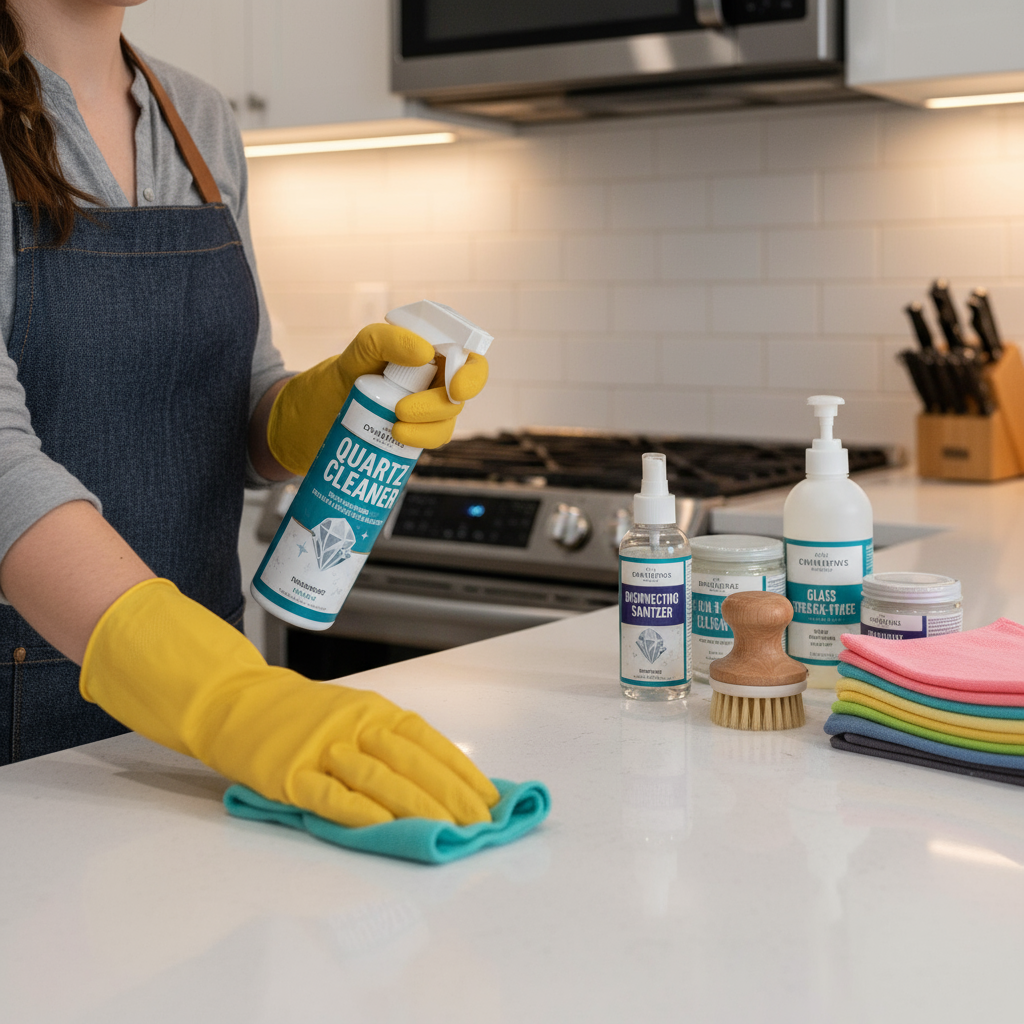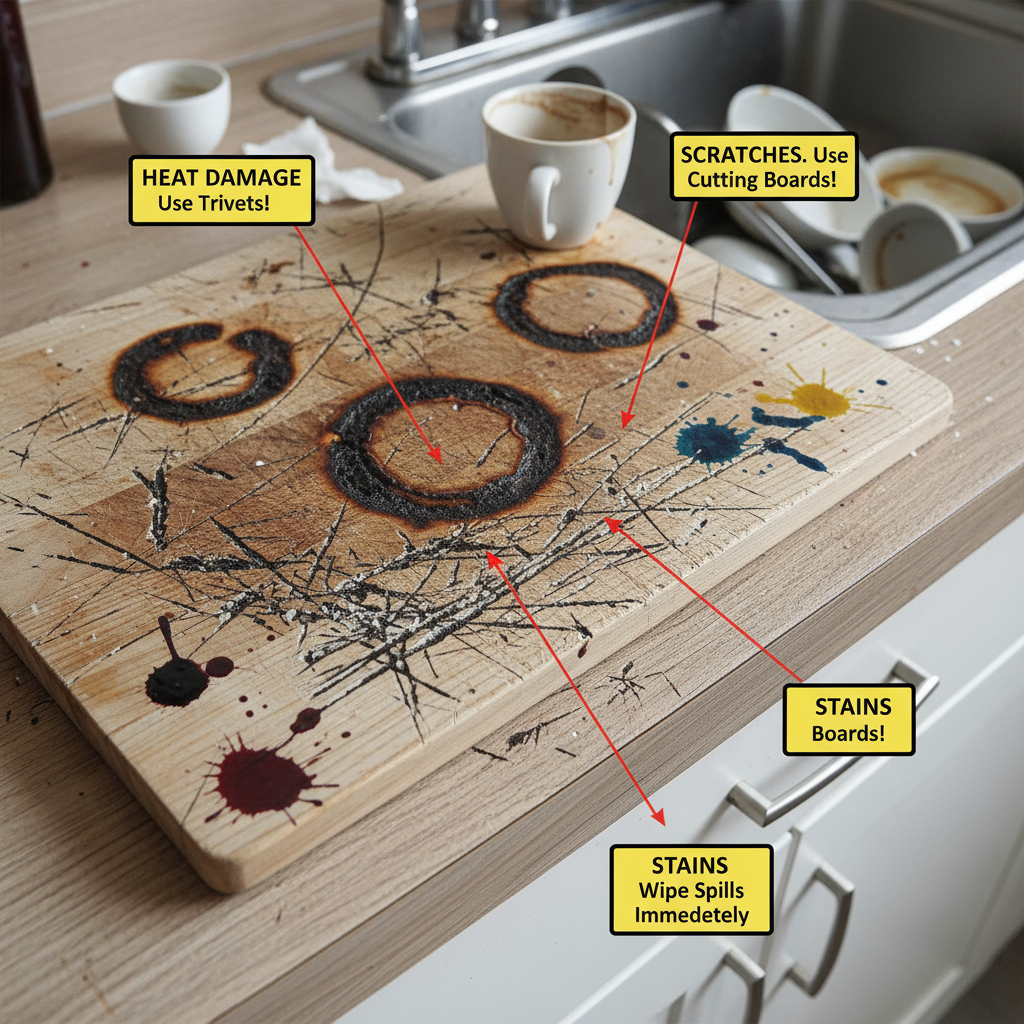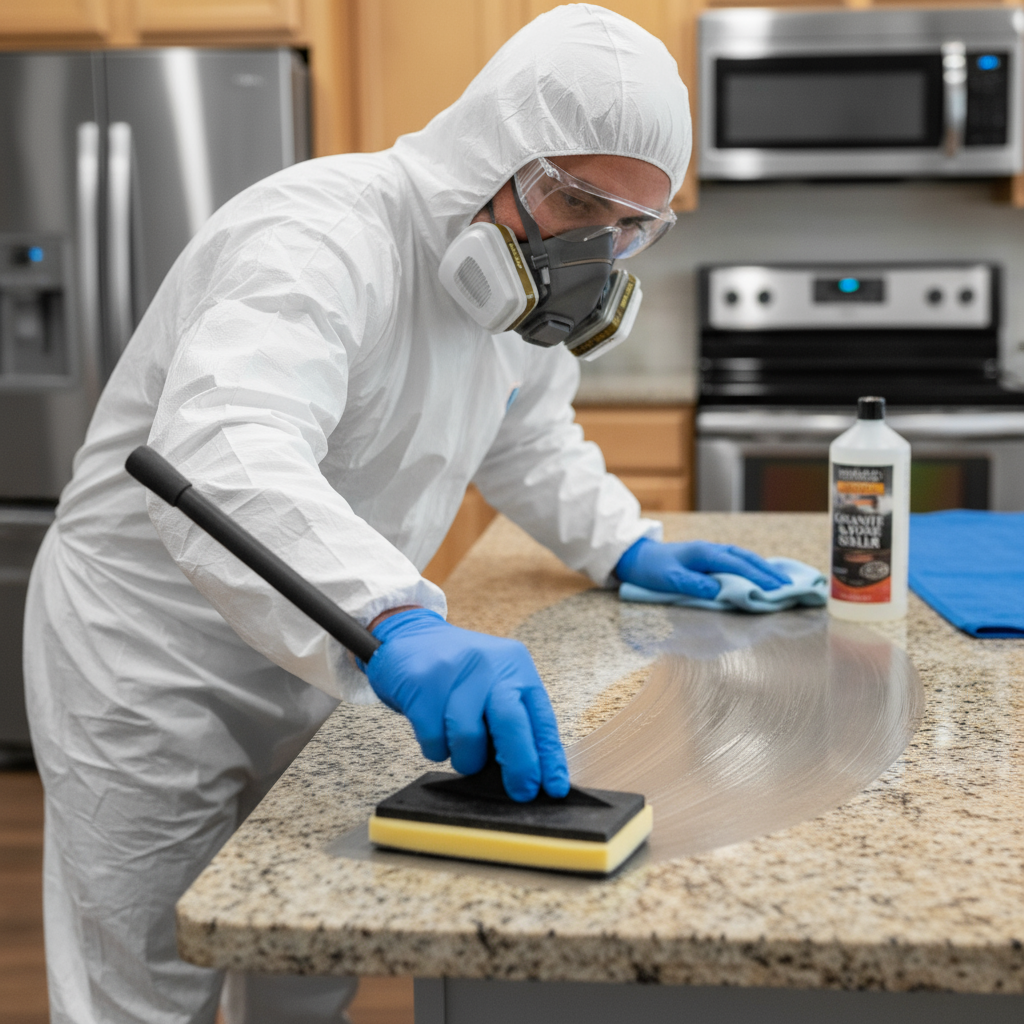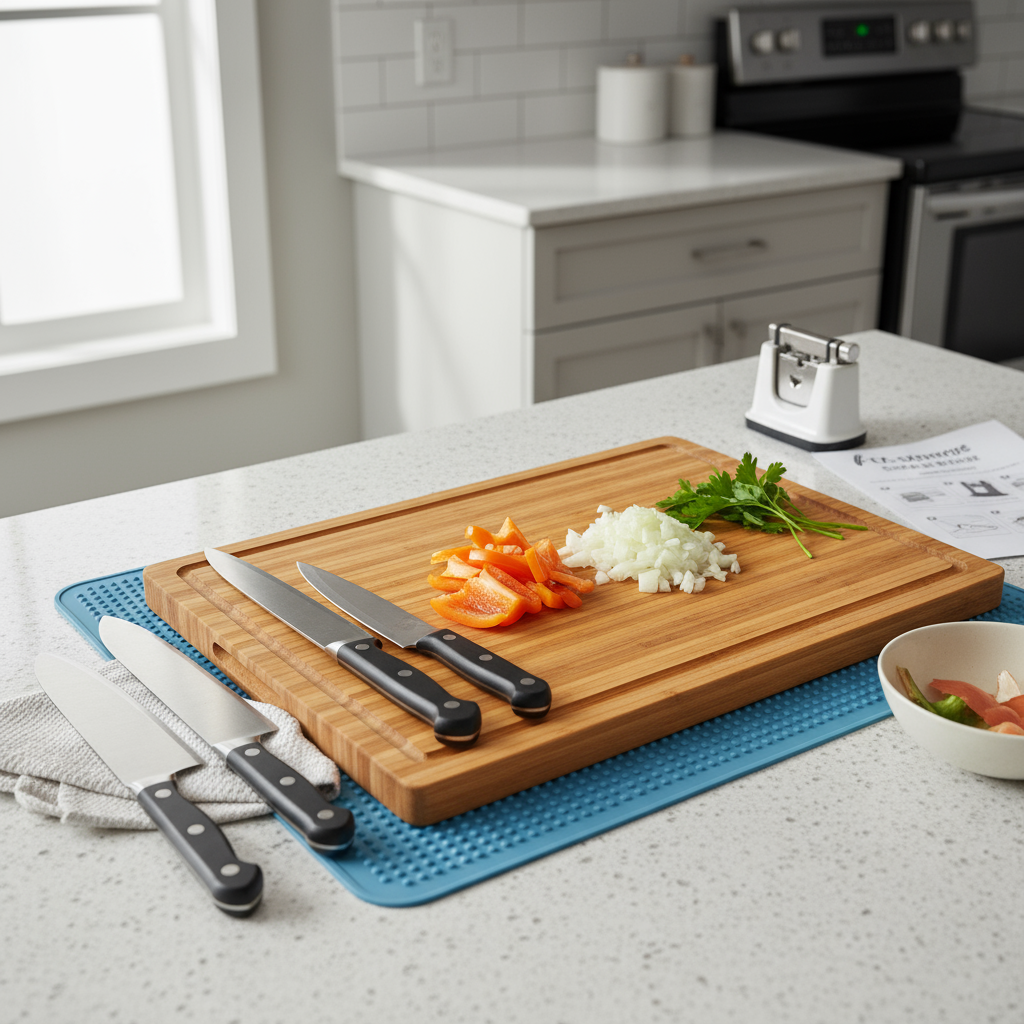TL;DR
- Use appropriate cleaners to prevent damage
- Establish daily care habits for longevity
- Protect from heat and moisture exposure
- Schedule regular professional maintenance
Proper countertop maintenance seems straightforward, but many homeowners make mistakes that lead to damage, stains, or premature wear. As a surface care expert, I’ve seen the consequences of improper cleaning and neglect. Understanding common pitfalls helps you maintain your countertops effectively and extend their lifespan.
Common errors range from using harsh chemicals to ignoring preventive care, resulting in costly repairs or replacement. By avoiding these mistakes, you ensure your countertops remain beautiful and functional for years. Let’s examine the most frequent issues and how to prevent them.

Using Wrong Cleaning Products
One of the biggest mistakes is applying inappropriate cleaners.
Harsh Chemical Cleaners
Using abrasive or acidic products that damage surfaces.
- Bleach Damage: Discolors and etches natural stone
- Ammonia Issues: Creates harmful reactions with certain materials
- Vinegar Problems: Too acidic for some engineered surfaces
- Oven Cleaners: Residue causes staining and etching
Abrasive Cleaners
Scrubbers and powders that scratch delicate surfaces.
- Scouring Pads: Micro-scratches accumulate over time
- Steel Wool: Leaves metal particles that rust
- Powder Cleaners: Abrasive particles wear down surfaces
- Dish Soap: Leaves residue that attracts dirt
Ignoring Daily Maintenance Routines
Failing to establish consistent cleaning habits.
Skipping Daily Wiping
Not removing spills and crumbs immediately.
- Sugar Residue: Attracts ants and causes sticky buildup
- Food Particles: Create breeding grounds for bacteria
- Liquid Stains: Penetrate porous surfaces over time
- Dust Accumulation: Scratches from daily particle movement
Improper Drying
Leaving surfaces wet promotes damage.
- Water Spots: Mineral deposits from hard water
- Mold Growth: Moisture in porous materials
- Warping Issues: Water absorption in wood surfaces
- Stain Development: Prolonged moisture exposure
Exposing to Extreme Temperatures
Not protecting surfaces from heat and cold damage.

Hot Pan Placement
Direct contact with hot cookware.
- Thermal Shock: Sudden temperature changes cause cracking
- Heat Rings: Permanent discoloration from hot bottoms
- Surface Melting: Softer materials deform under heat
- Adhesive Failure: Heat weakens bonding in some materials
Freezer Pack Use
Using frozen items directly on surfaces.
- Cold Cracking: Extreme cold causes material contraction
- Moisture Condensation: Creates water damage when thawing
- Surface Chipping: Frozen items can chip edges
- Expansion Damage: Thawing causes moisture expansion
Neglecting Sealing and Protection
Skipping essential protective treatments.

Missing Sealant Applications
Not maintaining protective barriers.
- Porosity Increase: Unsealed surfaces absorb stains easily
- Water Damage: Moisture penetrates unprotected areas
- Oil Absorption: Cooking oils darken unsealed stone
- Bacterial Growth: Unsealed surfaces harbor microorganisms
Improper Sealing Technique
Applying sealant incorrectly.
- Uneven Coverage: Missed spots leave vulnerable areas
- Over-Application: Excess sealant creates sticky surfaces
- Wrong Products: Using incompatible sealants
- Timing Errors: Applying before surfaces are fully cured
Improper Cutting and Food Prep
Using countertops as cutting surfaces without protection.

Direct Knife Cutting
Chopping directly on surfaces.
- Scratch Marks: Knife edges create visible scratches
- Groove Formation: Repeated cutting creates deep marks
- Bacterial Transfer: Raw meat juices create contamination risks
- Edge Damage: Cutting near edges chips material
Heavy Object Placement
Dropping or placing heavy items carelessly.
- Impact Cracks: Heavy drops cause spiderweb cracking
- Edge Chipping: Sharp corners chip when items slide off
- Surface Denting: Soft materials dent under heavy weight
- Joint Separation: Heavy loads stress seams and joints
Skipping Regular Inspections
Not monitoring surface condition over time.
Wear Pattern Ignorance
Missing early signs of damage.
- Crack Development: Small cracks grow if untreated
- Stain Penetration: Colors deepen over time
- Edge Wear: Corners round from daily use
- Color Fading: UV exposure causes discoloration
Professional Checkup Delays
Not scheduling expert evaluations.
- Hidden Damage: Internal issues not visible to owners
- Maintenance Timing: Missing optimal treatment windows
- Repair Opportunities: Small issues become major problems
- Warranty Compliance: Regular inspections maintain coverage
Overlooking Humidity and Moisture Issues
Ignoring environmental moisture factors.
Poor Ventilation
Inadequate air circulation in humid areas.
- Condensation Buildup: Moisture collects on cool surfaces
- Mold Development: High humidity promotes fungal growth
- Material Swelling: Wood and some composites absorb moisture
- Efflorescence: Mineral deposits from evaporating water
Water Proximity Issues
Placing water sources too close to edges.
- Edge Absorption: Water wicks along cut edges
- Splash Damage: Cooking splashes create permanent spots
- Sink Overflow: Water damage from plumbing issues
- Appliance Leaks: Undetected drips cause hidden damage
Rushing Repairs or Touch-Ups
Attempting DIY fixes without proper knowledge.
Improper Filler Use
Using wrong materials for repairs.
- Color Mismatch: Fillers don’t match original material
- Shrinkage Issues: Some fillers contract and crack
- Weak Bonds: Poor adhesion leads to loose repairs
- Staining Problems: Fillers absorb stains differently
Surface Preparation Errors
Not preparing damaged areas correctly.
- Incomplete Cleaning: Residue prevents proper bonding
- Depth Issues: Not removing enough damaged material
- Moisture Problems: Repairing damp surfaces
- Curing Time: Using repaired areas too soon
Not Following Manufacturer Guidelines
Ignoring specific care instructions.
Care Instruction Neglect
Not reading or following provided guidelines.
- Cleaning Frequency: Missing recommended maintenance schedules
- Product Restrictions: Using prohibited cleaners or tools
- Temperature Limits: Exceeding safe temperature ranges
- Warranty Voiding: Actions that invalidate manufacturer protection
Material-Specific Ignorance
Not understanding unique material requirements.
- Stone Sealing: Natural stone needs periodic resealing
- Laminate Care: Plastic surfaces have different needs
- Wood Conditioning: Butcher block requires oiling
- Quartz Maintenance: Engineered stone has specific cleaners
Underestimating Wear from Heavy Use
Not accounting for high-traffic usage patterns.
Commercial-Style Usage
Treating home countertops like restaurant surfaces.
- Intensive Cleaning: Daily deep cleaning wears surfaces
- Heavy Equipment: Restaurant tools cause more damage
- Chemical Exposure: Strong cleaners degrade materials
- Continuous Use: No rest periods for surface recovery
Family Activity Impact
Not considering household usage intensity.
- Kids’ Activities: Art projects and science experiments
- Pet Interaction: Clawing, jumping, and food messes
- Entertaining: Party preparation increases wear
- Home Office: Additional daily use beyond cooking
Conclusion
Avoiding common mistakes in countertop maintenance and care ensures your surfaces remain beautiful and functional. As your surface care resource, I recommend using appropriate cleaners, establishing daily habits, protecting from damage, and scheduling professional maintenance. By following proper care protocols, you’ll extend your countertops’ lifespan and maintain their value.
Use our directory to find professional countertop maintenance services with expertise in your material type. With proper care, your countertops will continue to enhance your kitchen for many years.